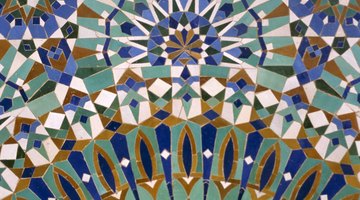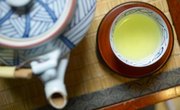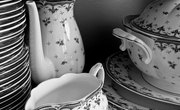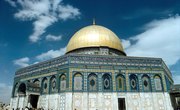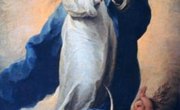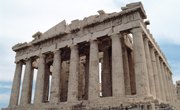Islamic art evolved over millennia, in countries under Muslim rule, as artists in various dynasties absorbed the regional styles and tools of a growing empire. Elaborate, overall decoration is a predominant theme, as is the careful selection of color. Both design and color have played off each other as belief, the availability of pigments and dyes, and increasing wealth and sophistication have shaped and shaded an exuberant heritage of art and architecture.
Muhammad's Favorite Color
Islamic art and architecture developed in the context of a powerful religion, pervasive in every aspect of life. Devout Muslim creative artists and artisans consider that their work is a form of prayer and select auspicious colors based on scripture. Green is mentioned frequently in the Quran as the color of silken garments and pillows in Paradise and has traditionally been considered the color worn by the Prophet Muhammad.
Paint, Pigment and Polychrome
Painting, ceramics, weaving and glass all borrowed colors from the many cultures that embraced and influenced Islam. For example, vivid Iznik red ceramic pigment was discovered during the Ottoman Empire. The variety of hues woven into all forms of art have been important in the development of the distinctive Islamic shapes and ornamentation. The Quran and other sacred teachings discourage the creation of images and so patterns and abstraction came to characterize Islamic art. Graceful whorls of calligraphy, geometric shapes, vegetal designs and figural representation evolved into a lacy, sinuous style used to decorate pottery and tiles, knot rugs, paint miniatures, build or carve architectural overlays and color blown glass. Contrasting hues, brilliant polychrome glazes, silver inlay over bronze, red, green and blue dyes, allows the artist to emphasize the design and evoke the visual harmony which is a spiritual feature of Islamic art.
Ornate Architecture
The use of color in architecture was influenced by location and historical period -- Mughal Indian and Persian buildings are brightly ornamented while Arabian buildings reflected the sandstone hues of the desert and the grays of local stone and clay. Domes are a distinctive element of Islamic architecture and none is more famous than the Dome of the Rock, a seventh-century world treasure erected on sacred ground in Jerusalem with an imposing gold-leaf dome and an interior covered in glittering colored and gilded glass mosaic cubes in traditional Islamic designs. The dome of the Bukhara tomb in Uzbekistan, glory of the 10th-century Silk Road city, gleams under its shell of colorful mosaic tile. Lush, flamboyant color is a distinctive attribute of Islamic architecture, whether mosque, memorial or luxurious residence.
Cultural Fusion
Contemporary artists influenced by Islamic culture employ the vivid and subtle colors, abstract designs and calligraphy of traditional Islamic art in their work. Color is used to highlight and contrast design elements and backdrops or to re-imagine bright Persian miniature paintings. Modern Islamic artists might use ancient black and white calligraphy imagery but adapt it from ink and scrolls to oil on canvas and showcase specific words and letters with bursts of pink or washes of blue. A painter of miniatures today might collage the canvas with brightly-colored details from comic books and action figures superimposed over a black and white Persian landscape, captioned in Islamic calligraphy.
Related Articles
References
Writer Bio
Benna Crawford has been a journalist and New York-based writer since 1997. Her work has appeared in USA Today, the San Francisco Chronicle, The New York Times, and in professional journals and trade publications. Crawford has a degree in theater, is a certified Prana Yoga instructor, and writes about fitness, performing and decorative arts, culture, sports, business and education .

